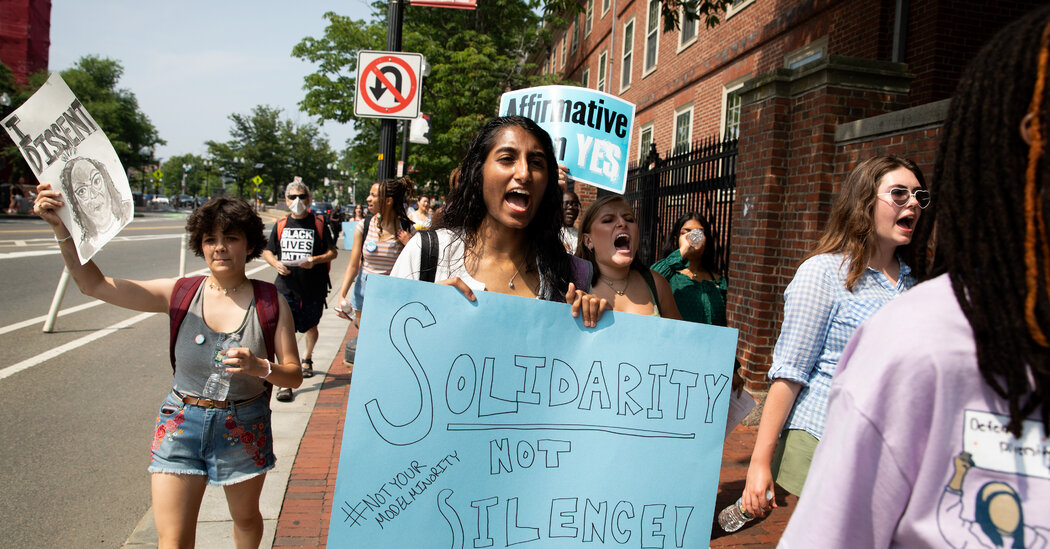Black Prisoners Face Higher Rate of Botched Executions, Study Finds
As Clayton Lockett lay on an execution table in Oklahoma in 2014 awaiting his death, medical officials struggled to gain access to a vein to administer a lethal injection. They inserted needles in his arms, his neck, his chest and eventually his groin, where they mistakenly struck an artery. The prison warden later described it as “a bloody mess.”
The execution was called off, but with most of the drugs having already been injected, Mr. Lockett was pronounced dead on the table about 20 minutes later. Mr. Lockett’s case spurred Oklahoma to overhaul its execution protocols and, months later, the state stopped carrying out the death penalty for several years.
But a new report released by an anti-death-penalty group on Thursday suggests that the botched execution is also part of a disturbing, nationwide pattern: Executioners have botched the lethal injections of Black people, like Mr. Lockett, more than twice as often as those of white prisoners, the report said.
That finding builds on a wealth of research into racial disparities in how the U.S. judicial system administers the death penalty. The proportion of Black people on death rows is far higher than their share of the population as a whole, and one study in Philadelphia found that the people most likely to receive death sentences were Black defendants convicted of killing victims who were not Black.
The new report, from Reprieve, a human rights group that opposes the death penalty, adds to that previous research with findings that the likelihood of a botched lethal injection is also higher for Black people on death row.
“We know that there’s racism in the criminal justice system,” said Maya Foa, an executive director of Reprieve. “We know it’s there in the capital punishment system, from who gets arrested, who gets sentenced, all of it. This is, though, the first time that it’s been looked at in the context of the execution itself.”
She said the extent of the disparity found by the researchers, Reprieve staff members, was “really alarming.”
The group was not able to explain why Black prisoners had suffered botched executions at a higher rate, saying that more research was needed. Reprieve also said that there appeared to be “no easy answers,” adding that “across the botched executions studied, similar issues arose whether the execution was of a Black person or a white person.”
Austin Sarat, a professor at Amherst College in Massachusetts who has long studied the death penalty, said the new research was “an enormous step forward in understanding the pervasiveness and influence of race” in how the death penalty is carried out. Professor Sarat, who saw the report but did not work on it, said it appeared that racial biases that harm Black people in other contexts, such as in medical care or policing, also do so in execution rooms.
“The finding doesn’t surprise me, in the context of what we know about the disparities throughout society,” he said. “Here is now another instance.”
Two other prominent experts in race and the death penalty, Stephen Bright at Yale Law School and Jennifer L. Eberhardt at Stanford University, said the findings were intriguing and that more research was needed to explain them.
Professor Eberhardt was the lead author of a landmark 2006 study that found that, in criminal cases with white victims, defendants perceived as looking more “stereotypically Black” were more likely to be sentenced to death. She said she could not immediately think of any previous research that could explain the disparity in botched executions.
Dr. Ervin Yen, an anesthesiologist and former Republican state senator in Oklahoma who has witnessed 11 executions for the state but does not actively participate, said several factors can make it more difficult to insert an intravenous line. They include the patient’s being overweight or having a history of injecting drugs, he said.
Dr. Yen, who said he has started “zillions of IVs” in medical settings, said that it can sometimes be harder to get access to veins on people with darker skin because the veins can be less visible. He said more research should be done to pursue an explanation for the report’s findings.
The report’s authors also encouraged more research, writing that it should “be considered in the context of extensively documented racism in the U.S. capital punishment system.”
Executions have declined since their modern peak, in 1999, and only five states carried out executions in 2023, but how exactly lethal injections are administered has come under increased scrutiny as states encounter problems getting reliable drugs from pharmaceutical companies and reports proliferate of executions gone awry.
Alabama and Oklahoma have in recent years imposed temporary moratoriums on executions after failed lethal injections, including Mr. Lockett’s. The Death Penalty Information Center said that more than a third of execution attempts were mishandled in 2022, and researchers there described it as “the year of the botched execution.”
In the new report, researchers studied 1,407 lethal injection attempts from 1977 through 2023 and looked for signs that the execution was botched, like if a person appeared to be conscious after the lethal drug or drugs were injected; if there was a problem inserting an intravenous line; or if a person reacted unexpectedly, such as by vomiting.
The executions that the report labeled “botched” ranged widely. In one case, it was merely delayed by “several minutes” as staff members tried to find a suitable vein for a backup needle. Others, like Mr. Lockett’s, were far more grisly.
The report concluded that 37 of 465 executions of Black people were botched — about 8 percent — compared with 28 out of 780, or about 3.6 percent, of those of white people. Even accounting for age and gender, the researchers said, executions of Black people were more than twice as likely to be botched than those of white people.
The researchers said they did not come to any statistically significant conclusions about the executions of Latino prisoners. Their analysis also showed that one-fifth of the 20 executions of American Indian or Alaska Native people were botched, but that the finding was not examined closely because of the small sample size.
In some states, the numbers were particularly stark. In Georgia, Black people made up 30 percent of those executed during the relevant time period and 86 percent of the executions identified as botched. In Arkansas, about 30 percent of Black prisoners had their executions botched, the report said, compared with 13 percent for all prisoners.
In addition to the findings on race, older prisoners were markedly more likely to have problematic executions, the researchers said, with the chance of it rising by an average of 6 percent for each year of someone’s life. This year, Idaho abandoned an execution after trying and failing to find a suitable vein in a 73-year-old prisoner, Thomas Creech, who had been sentenced to death more than 40 years earlier.
The group also noted a lack of transparency in capital punishment that hindered attempts to understand what is causing the problems. This includes the opaque way fatal drugs are often procured — such as states passing shield laws to hide details about where the drugs were sourced — as well as the regularity with which prison officials minimize problems that take place during executions.
The report also said that executions often went wrong when officials were trying to rush, for example when drugs were expiring soon or, as in Mr. Lockett’s case in Oklahoma, two executions were scheduled for the same day.
In that case, the second execution was postponed after Mr. Lockett’s execution was botched. Six months later, the second prisoner’s execution was botched, too, when officials used the wrong drug to stop his heart.


